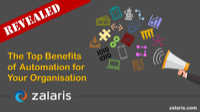H1 2021 : SuccessFactors Employee Central Service Centre
22 May 2021For me, 2021 has been a busy year to date. Shifting priorities meant that while I took stock of the Q1 updates in Cloud for Customer for Employee Central Service Centre, I never quite managed to get a full article ready for publishing. To that end, I will incorporate details of both the Q1 and Q2 Cloud for Customer updates into this article.
What can you look forward to then? Well, SAP has described its approach to service in 2021 as one of modernisation and innovation. One in which they are seeking to improve not only the end-to-end processes, but also the usability of the systems.
Let us look at how SAP has fared to date against these aspirations.
Cloud for Customer
Look and Feel
Since the Q1 release, the Saphira theme has been in general availability, bringing a fresh and modern styling of the service agent user interface. With new layout approaches guiding much of the design, service agents now have a cleaner user interface, making it a more enjoyable experience to work with and more straightforward for new users to pick up.
I think SAP has done a great job with this, and it fits well with many of the user interface updates that have been applied over the last 18 months. This new theme alone puts SAP off to a strong start on their 2021 aims.
Communications
E-mail is getting a modicum of attention in this latest update to Cloud for Customer, but it received several updates in the Q1 update.
The first update that I want to highlight is for unassociated e-mails. These are e-mails submitted to Cloud for Customer, but where the e-mail address is not uniquely associated with an existing employee record. Previously, each e-mail could be associated with an employee and transformed into a ticket or associated with an existing ticket. This revision allows batch association of unassociated e-mails with a ticket. This addition will be beneficial to service agents in organisations who have to deal with larger volumes of such e-mails, who will now be able to deal with them much more rapidly. Probably not a universally common scenario, but I can imagine a few around new starters that could generate occasions where this could prove beneficial.

The second point to highlight is a small addition to signature templates where service agents can now automatically include their job (UserJob), and for US users, the state in which their organisation is incorporated (OrganizationStat). I am sure this will allow some organisations to manage their standard e-mail signature templates more efficiently.
Lastly, there is what is perhaps best termed a quality-of-life improvement. In the Q2 release, the e-mail entry area in tickets increased in height (doubled). The field has previously been resizable, but service agents repeatedly did this to get it to a more workable size. This change will mean it will simply default to a more practical size.
The Q1 release also included some improvements to the ticket timeline listing. First of all, the listing gained an improved filter to allow service agents to filter to a particular type of interaction (for example, e-mails or notes). This change should make managing longer sets of interactions a little easier. In addition, a refresh button has been added, making it easier for service agents to check for updates when they have had a ticket open for a while.
Finally, if you are an organisation that uses integrated chat, Cloud for Customer can now host multiple parallel conversations for calls and chat. Previously service agents needed to close conversations to switch conversations, but this Q1 update allows service agents to switch seamlessly between conversations. Just be sure to permit the service agents some practice on this one, as you do not want to be crossing over data on confidential calls.
Tiles
The recent Kanban board and quick link tiles are ones that I imagine most customers have experimented with by now. In Q1, SAP has improved the configuration of these tiles. They have addressed known limitations on the Kanban boards and put in place options to customise the content of the quick links tile, something I feel they should have had for the first release.

Language Adaptations
New functionality is being added to the Data Workbench for language adaptations that look to vastly improve the ease of maintaining system labels and other language-specific content. The new options allow for a much simpler approach to exporting, maintaining, and re-importing language-specific content and seems to have been created very much with usability in mind.
I am not exactly sure why the old approach was so convoluted, but this new approach is arguably more like how it should have functioned originally.
One final point on this functionality is the availability of a good walkthrough post by Dirk Stampf of SAP that is available courtesy of the SAP Community Network.
Export to Excel Files in Data Workbench
A new beta feature is available in Data Workbench to export to Excel file format over comma-separated values (CSV) format. However, there seems no apparent benefit of using this over the more accessible comma-separated values (CSV) file format that Excel handles quite reasonably in any case. Because of this, I would not advise going out of your way to request access to this feature.
Ticket Routing Rules
There is an interesting addition to routing rules in this Q2 release through the addition of “Territory Name”. This addition has the potential to allow many organisations to simplify and rationalise their routing rules. The trick is to have a good, compound naming convention around your territory hierarchy of support team names.
Using this new feature, you can work with fragments of a territory name, which can help build more flexible and adaptive routing rules, than specifying and maintaining territory IDs for the rules.
Performance Improvements
In Q1, SAP announced that they had made several system performance improvements. The estimated performance gain is 20% across the systems, though some areas will have improved significantly more than others, and not everything is 20% faster.
My observations are that the speed improvements are probably focused on data retrieval. Although not always easy to measure on smaller data volumes, where larger volumes are involved, I think they are more easily discerned. Any performance improvement is good as it is less time waiting for the system and leads to a more positive experience and the obvious time-saving benefit.
Machine Learning
For those organisations with enterprise licensing who are making use of machine learning to support their ticket allocation, Q1 brought an update to service analytics. The CODSRQML option now shows machine learning predicted values, including the confidence level.
New Agent Desktop
In Q1, SAP introduced a new ‘Agent Desktop’ beta. A new service agent user interface for making it easier to deal with live communications (for example, through computer telephony integrated systems) and a more dynamic user interface that incorporates various artificial intelligence-driven aspects. While it is certainly an interesting development, there are several points to consider from an Employee Central Service Centre perspective.
The first is that it is not expected to reach a point of general availability until the end of the year. As such, it has many limitations making it unsuitable for anything but curiosity at this time.
The second point is that it is designed very much for business-to-business and business-to-consumer support scenarios. Not employee support scenarios such as is the focus of Employee Central Service Centre.
At this point, I am not sure what the design differences to a solution designed for employee support scenarios might be, but 2022 might offer the opportunity for SAP to look at providing employee support tailored options. However, I must admit to being unsure as to quite what that might look like.
Extension Fields
Cloud for Customer supports the addition of custom extension fields in many places. These fields have been included by default in the basic search functionality available. With this release, these fields will be disabled by default in the basic search. If your organisation is using extension fields, it is worth reviewing if users are also using any of these fields in the basic search. If they are, then re-enabling them will be required. Leaving them disabled should improve system performance for searches, and the fields will still be available under advanced search options. But, if your organisation’s service agents rely on quick access to search those fields, this is something to investigate a little more closely.
Ask HR
Qualtrics Integration
I am a little surprised that it has taken this long to see Qualtrics integration for the Employee Central Service Centre employee surveys, but it finally looks to be here. When an employee is in Ask HR and marks their ticket as completed or confirms the proposed resolution of a ticket, they can now be prompted to complete a Qualtrics survey.
Whereas the standard surveys are internal to C4C and prompted via e-mail, the Qualtrics surveys are delivered ‘just in time’ when the user takes action. The data gathered is anonymous but will feed back into the larger data pool. If your organisation is already using Qualtrics, this is something you should check out.
Many organisations prefer not to survey users on every occasion. While it would be nice to see rules applied for when a survey is presented, users can at least decline the completion of a survey.
Knowledge Base Search Filtering
For those organisations using SAP Jam as a knowledge base for Employee Central Service Centre, the 2H/Q4 2020 update introduced an option to strictly filter what categories of content were available for employees to search against in the knowledge base section of Ask HR. In this release, employees can now further constrain their search by specifying to show results only for selected content categories.
This filtering could be beneficial for larger content sets, but it requires a certain level of understanding from the employee of the type of content they seek. I would recommend to organisations who feel this might be advantageous to look at their knowledge article naming convention and data. The chances are most users will attempt to refine their search using key terms, and so a revision of the term matching is likely to have a more significant impact.
All told, I am quite surprised to see this included in this update. SAP Jam is no longer on the SAP price list, its successor logically being SAP Workzone for HR. I would have expected to see investment in having this new product integrate with Employee Central Service Centre as a knowledge base be something that was emerging about now. I also noted that the new agent desktop in Cloud for Customer explicitly does not ‘currently’ support SAP Jam, so it will be interesting to see how that one plays out over the next six to twelve months.
It feels to me like this is an exercise in rearranging deck chairs on the Titanic. Hopefully, in the 2H 2021 release, we will see SAP make a more concerted effort to take the product forward. Knowledge base integration can be a huge benefit when done well.
Implementation
A final noteworthy point is probably of most interest to implementation consultants.
Speaking from experience in implementing the first version of Ask HR, the implementation approach was convoluted and a little unstable. In comparison, the second version that we currently utilise has been much better. While there have been minor issues here and there with the initial set-up, SAP has become much more efficient and proficient at setting it up. With this latest improvement that, in all practical sense, has been entirely mitigated.
Subscriptions can now automatically be activated without raising a ticket with SAP and having someone behind the curtain press the right buttons and run the correct scripts. This automated approach should make what was already a fairly reliable process practically bulletproof and much quicker to complete. As a result, this should save at least a day or two elapsed time and potentially hours of additional work.
I cannot wait to try this one out!
Conclusion
If you have been a regular reader of our Employee Central Service Centre articles, you may have noted that even though this article considers updates from the Q1 Cloud for Customer release, it perhaps feels slightly lighter than usual. Perhaps even more so when you take into account that some of the updates like the Saphira theme move to general release or the increase of the height of a field to enter e-mail content. Both relatively low effort changes at this time. But there are three points I would make on this:
- Like the performance improvements, some of the changes likely took a lot of effort but resulted in little, if any, visual change within the system.
- Cloud for Customer is a big part of Employee Central Service Centre, but it is used for many more things. There are many changes in Cloud for Customer that have little to no relevance to Employee Central Service Centre. At first glance, this Q2 update to Cloud for Customer may not appear to have as many updates as usual, but it is more accurate to say that not as many apply to Employee Central Service Centre.
- SAP is working on many new features and extensions to Cloud for Customer, including the new agent desktop. These developments are ongoing, and while SAP has shared some details with partners, this should be taken to be an active area right now that is taking up some of the Cloud for Customer development team’s time.
I am glad to see SAP is investing time in improving overall performance and enhancing the look and feel to make the system quicker, easier, and even just nicer to use. I do like that the obvious Qualtrics integrations are starting to surface. From a consultant perspective, the improvements to the automated installation of Ask HR are also very welcome, but I am also a little disappointed.
Work has changed for many people over the last twelve months or so. The global pandemic has pushed businesses to pivot, to accelerate their remote working practices. SAP has broadly been moving to support that by introducing a product like SAP Workzone for HR and the Microsoft Viva integration. I had expected to see more about how Employee Central Service Centre could be integrated with these solutions. It is a prime candidate and generally well-positioned. The opportunity is right there. I am hopeful that we will see these integrations appear in the second half of 2021.
With so many technologies picking up momentum in these areas, the only question is, will it be too little too late? Is the pace of modernisation and innovation by SAP going to be fast enough to win the race? Maybe, but with so much change going on, it is still too early to call.
 Scroll the menu to find all the places to visit
Scroll the menu to find all the places to visit


